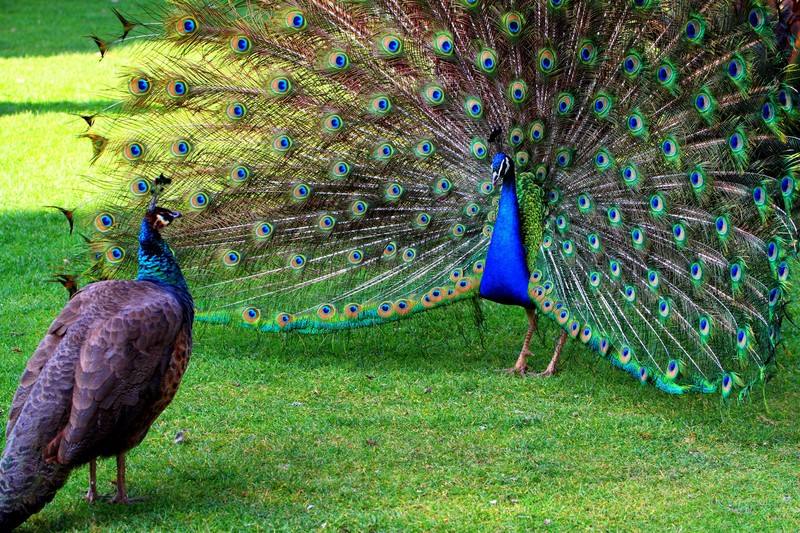Yang Xiaojun was excited to learn the six pure green peafowls his team raised since the end of last year had laid more than 20 eggs, as it offered promising progress in the captive breeding project of one of the world's most threatened pheasants.

"These newly laid eggs bring hope to the rare species that only has a wild population of less than 500 in China," Yang said.
The 58-year-old researcher with the Kunming Institute of Zoology under the Chinese Academy of Sciences has been leading his team to ensure "more captive green peafowls can soon return to the wild."
Native to the tropical and subtropical forests of Southeast Asia and southern China, the green peafowl is under top national-level protection in China, listed as endangered on the International Union for Conservation of Nature (IUCN) Red List of Threatened Species.
From peacock brocade, ancient murals to imperial fans made of peacock feathers, the green peafowl, dubbed as the "king of birds," is a representative figure of traditional Chinese culture and has long been seen as the real-life phoenix. In the Qing Dynasty (1644-1911), only high-ranking officials were permitted to wear hats with a green peafowl feather.
"Historically, green peafowls were widespread in provinces and regions including Hunan, Hubei, Guangdong and Guangxi, but it has been only spotted in southwest China's Yunnan Province since the 1990s when the species registered an estimated population of 800 to 1,100," Yang said.
"In the wild, green peafowls breed once a year, laying three to five eggs at a time. The animal is timid and will abandon its nests and run away at the slightest trouble," Yang said. "The chance of hatching a healthy green peafowl is thus very low."
In recent years, local authorities, along with forces including scientific institutions and public welfare organizations, are beefing up efforts to help revive the endangered group.
As of last year, Yunnan has invested more than 11 million yuan (about 1.56 million U.S. dollars) in the protection of green peafowls, implementing monitoring systems and providing water and food sources to the species.
Scientific institutions are also working on the bird's populations and habitats. A survey lasting several years conducted by Chinese scientists showed in 2018 a dramatic population decline of the green peafowl, saying that the animal disappeared in 60 percent of its distribution areas in China. The survey found the species in only 22 counties in Yunnan, with a wild population of less than 500.
Fortunately, a certain number of green peafowl populations and large suitable habitats have been found in the middle and upper reaches of the Yuanjiang River in Yunnan, with the survival rate of nestlings in some nature reserves extremely high, which has laid a solid foundation for the protection and population restoration of the species, according to Yang.
Non-governmental forces such as environmental protection and public welfare organizations are also taking actions, with public service advertisements appearing in the subway of Beijing and more than 700 cinemas across the country.
According to court decision on the first case of public interest litigation regarding Yunnan's green peafowls on March 20, the construction of a hydropower station was ordered to be suspended immediately, given the damage the project would likely inflict on the habitats of the rare animal.
"Now the protection of green peafowls has been deeply rooted among the public, providing an example for the future protection of more rare and endangered animals in China," said Wen Cheng, an expert with the National Forestry and Grassland Administration.
Globally, the green peafowl is also facing difficulties in survival. According to the IUCN, there are only about 15,000 to 30,000 green peafowls worldwide, and its populations in countries including Cambodia, Myanmar, Vietnam and Thailand are plummeting sharply.
"China's efforts in saving the species may also bear great significance for the whole world," Yang said.
|






7740f3b5-9ecb-438e-9052-76cb2d4bb671.jpg)

